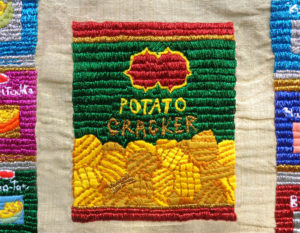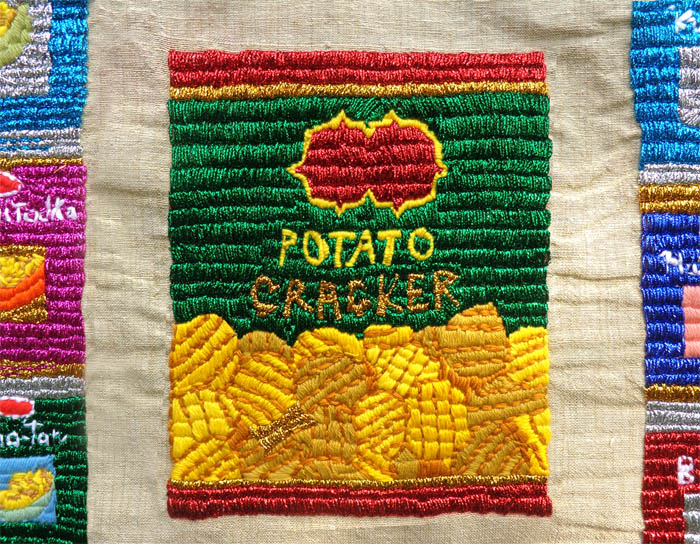The Assam is one of the most extensive Indian territories of the “seven sisters” area and its landscapes, shaped by unspoiled nature, are a mix of different ethnic groups and tribes. Over the centuries the territories, rich in reserves and archaeological remains, were disputed by the neighboring states as well as routes and explored by merchants and settlers. Today, thanks to the passion and the visionary spirit of Paolo Rosso (artistic director of Microclima in Venice), the capital Guwahati and the areas surrounding it are investigated by a group of Italian artists based in Venice, here invited personally by Rosso to lead long-term searches.
Since 2011, therefore, the metropolis, located on the bank of the Brahmaputra river, hosts the Guwahati Research Program: a specific context and community research and training project, free from the institutions, self-financed and activated through bottom-up dynamics. The purpose of the program, as the curator tells us, “is not so much the production of an artistic work as offering artists the possibility of rethinking oneself in relation to personal artistic research”, within an unknown context, in dialogue with the community, with the geography of the territory and its historical and cultural traditions, all without the imposition of a temporal constraint. Central is the modality to which the editor trusts for the choice of the artists, invited here because they are estimated first of all as persons and because they are researcher and thinker artists.
Over the years, therefore, who came to the place did nothing but activate their acute critical sense and the spirit of observation and, in total freedom, triggered very heterogeneous practices and processes between them. If, for example, Mario Ciaramitaro with A strange darkness has deployed various messages in the public spaces of a city in constant transformation, Riccardo Banfi recounts “he had simply let himself be carried away by the events” then impressed in the photographic work I found myself in Guwahati. Otherwise, during his stay, Martino Genchi relied on writing, while Matteo Stocco and Matteo Primiterra used the video for the documentary Shatalol. Edoardo Aruta, on the other hand, tells of having recently left for Assam “with the idea of doing pure research” and testing his skills in “an unexplored India source of stimuli and curiosity”.
Other artists, however, have been to Guwahati several times over the years, as Giuseppe Abate who between 2016 and 2017 worked on the Bhujia project, where the image of the snack packages was aimed at decorating fabrics designed by him and made with the finest fabrics of Assam; o Alessandra Messali, who arrived for the first time in 2013, then returned in 2016 and 2017. The long stay extended over the years has evolved and has slowly transformed her knowledge of the Assamese culture, then elaborated in the articulated project Emilio Salgari and the tiger based on the study of the novels of the Italian author and on the relationships and inconsistencies between the text and the context. In his research, Messali discovered that Salgari, unknown to the locals even though he had set his own writings in Guwahati, had never gone directly to the place. The entire project, therefore, was conceived by Messali “as an experiment, in which books are used as tools to reflect on what it means to represent a culture and what it means to be represented”.
The most interesting aspect of the Guwahati Research Program is to create a bridge between the West and the East, capable of activating a lasting bond over time that facilitates the meeting between different approaches and visions of being and inhabiting the world. The ambition to enrich the imagery linked to the place, through practices based on the principles of sharing, collaboration and participation, is represented by the Guwahati Bamboo Walkway, built in 2013 and now 400 meters long. This is a walkable jetty designed by Paolo Rosso and William West in collaboration with the community and with some local craftsmen from the island of Majuli, experts in bamboo processing. The catwalk, conceived as an “experiment and a means to know the context”, has been functional to create a public space for the stop, because it is oriented towards an area of the unspoiled and virgin city where the naturalness of the landscape nourishes the gaze of unique landscapes and singular, conveying the idea of the program as a container open to multiple practices and perspectives of study.
 Giuseppe Abate, Bhujia, dettaglio di ricamo su seta, 2016
Giuseppe Abate, Bhujia, dettaglio di ricamo su seta, 2016
 Guwahati Bamboo Walkway, photo Riccardo Banfi, 2015
Guwahati Bamboo Walkway, photo Riccardo Banfi, 2015
Michela Lupieri (* 1983) is curator, researcher and author. She graduated at IUAV of Venice in Visual Arts, with a specialization in contemporary art and curatorial practices. She is part of the curatorial team of Palinsesti and research fellow at the Archive of the Avant-gardes (Collezione Marzona) at the SKD of Dresden. She lives between Italy and Germany.







NO COMMENT